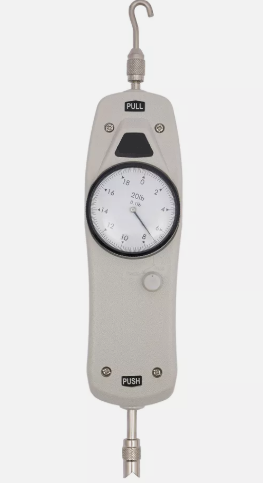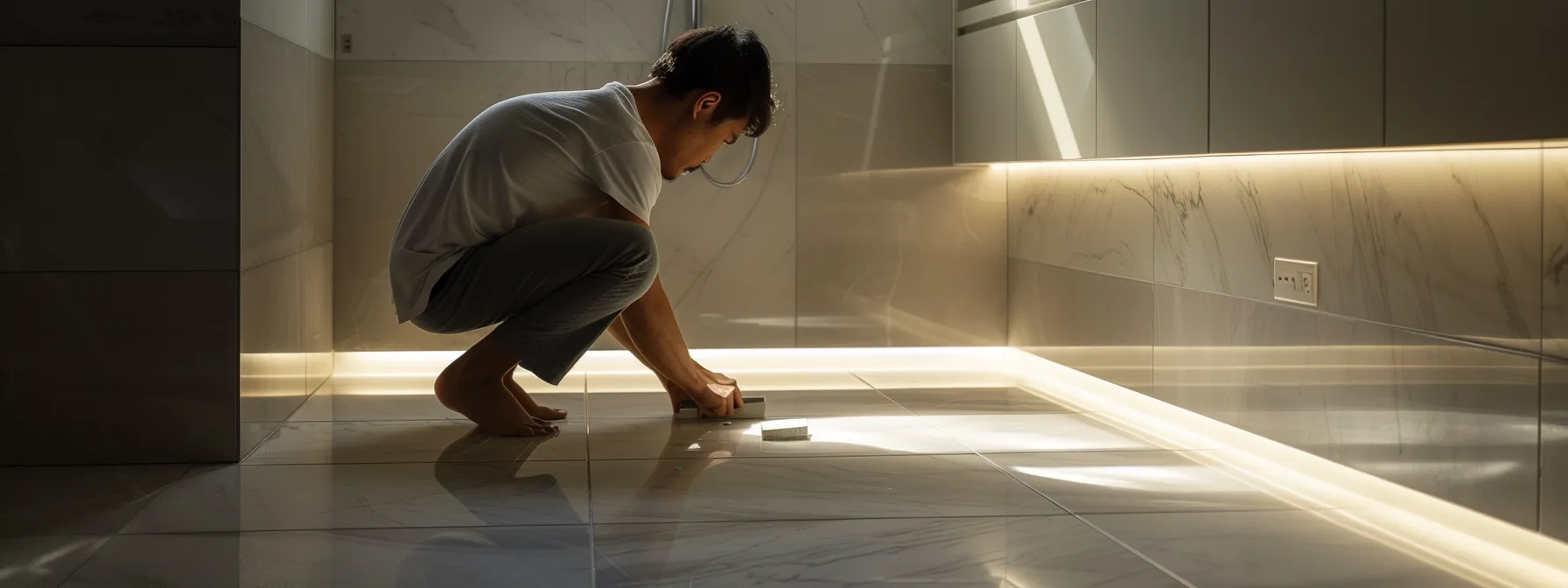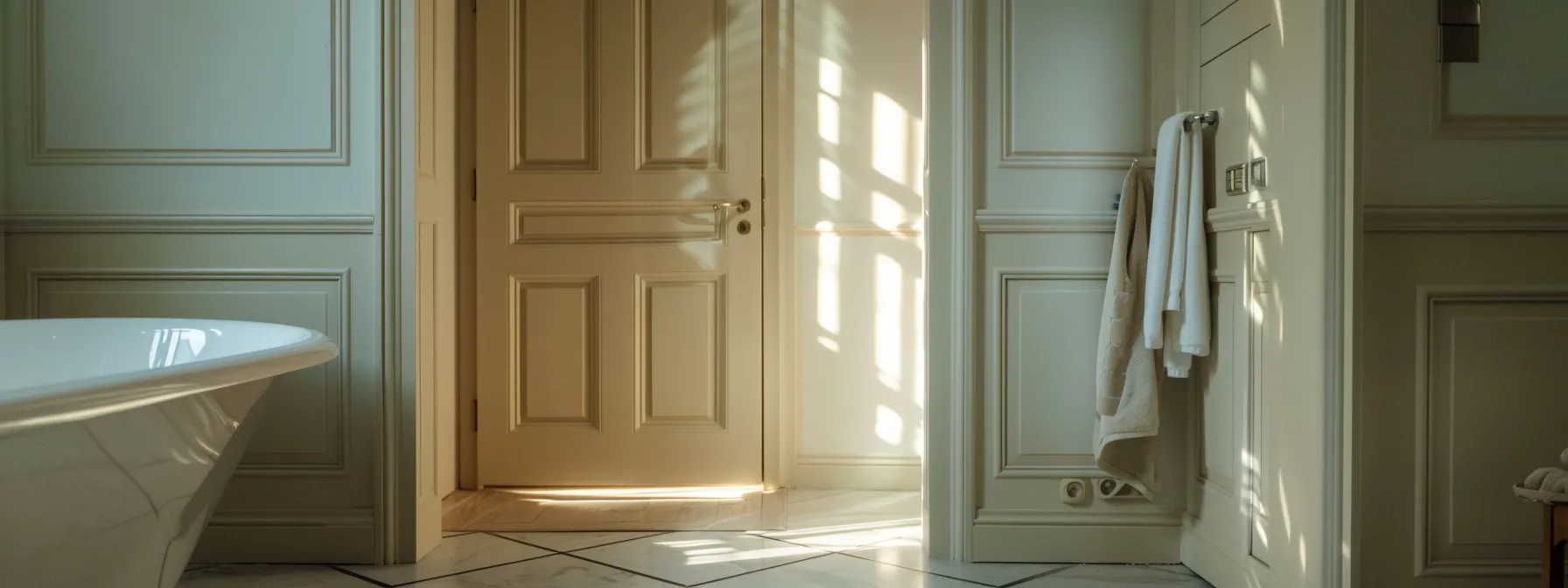
Navigating ADA bathroom requirements ensures that public and commercial restrooms meet standards accessible to all individuals, including those with disabilities. These requirements encompass a variety of elements, from the width of the aisles to the arrangement of plumbing under the sink. They also dictate the necessary clearances for countertops and the dimensions appropriate for a kitchen space modified for accessibility. In this article, readers will gather actionable insights on how to transform a bathroom to be both compliant and efficient. Stay tuned for a concise breakdown, complete with practical examples, that demystifies the complexities of ADA regulations.

An architect’s design for a public restroom unfolds a complex matrix where functionality converges with regulatory mandates. ada bathroom requirements compliance looms large in these considerations, asserting guidelines that ensure individuals with disabilities can navigate and utilize facilities with the same ease as everyone else. Among the various stipulations, floor clearance represents a significant aspect of usability, demanding meticulous attention to dimensions around fixtures such as the urinal to accommodate the turning radius and maneuvering needs of a wheelchair. Fused with the tactical language of braille within wayfinding elements, these standards serve as an integral faq for designers committed to crafting spaces that uphold the dignity and independence of all users.
ADA compliance is a cornerstone of inclusive design, integrating access for individuals using a mobility aid into the very fabric of public spaces. Architects and developers must weave ADA requirements seamlessly into their plans, ensuring bathroom facilities not only meet building code specifications but also present no barrier to use, whether in the provision of toilet paper or the maneuverability around fixtures. For a property to be considered ada compliant, it must reflect a commitment to these accessibility standards throughout its design and construction.
| ADA Requirement | Details |
|---|---|
| Bathroom clearances | Minimum dimensions around bathroom fixtures to ensure wheelchair maneuverability |
| Paper dispenser access | Placement within reach for seated individuals without necessitating excessive reaching or twisting |
| Building code adherence | Incorporation of current ADA standards into design, reflecting an up-to-date understanding of accessible features |
Within the confines of a public toilet, the compass of floor clearance stretches beyond the mere expanse of water and cabinetry: it shapes the threshold of accessibility. Should the space fail to meet ADA guidelines, the repercussions manifest not merely in the pages of a non-compliance report but palpably in the impediments faced by an individual with disabilities attempting a basic necessity – washing hands without obstruction.
Now, let’s pivot to the specifics of ADA turning space requirements. Prepare for a comprehensive breakdown of dimensions and regulations that ensure mobility freedom.

Section 304 of the ADA Standards delineates the minimum requirements for wheelchair turning space with precision, guided by the rigorous oversight of the United States Access Board. These stipulations include crucial measurements, such as the diameter needed for a 180-degree turn, which architects must integrate into their designs to avert common mobility barriers. Key dimensions for wheelchair turning space not only dictate the radius required but also consider necessary knee clearance beneath fixtures like sinks and mirrors. To ensure these parameters are clear, professionals often refer to illustrated examples of compliant spaces that showcase optimal configurations. The height of mirrors, the positioning of handrails, and the unencumbered turning diameter form the foundation upon which accessible bathroom designs are judged for their adherence to legal and ethical standards.
Section 304 of the ADA Standards sets the stage for creating an accessible bathroom by delineating the specific measurements required for adequate turning spaces. This section ensures that every room remains ada accessibility compliant, taking into account the need for individuals in wheelchairs to navigate freely, from reaching for soap to utilizing the toilet, without experiencing limitations in movement or safety.
Wheelchair turning space, as dictated by ADA compliance and the International Building Code, requires precise dimensions to afford dignity and independence to users with disabilities. one must consider not just the toe and knee clearance but also the length around a toilet seat to sufficiently accommodate a wheelchair. These intricacies ensure that persons with mobility aids can approach, transfer to, and exit from a toilet seat with autonomy.
To aid architects and constructers in aligning with ADA specifications, illustrated examples of compliant spaces offer visual blueprints where every element, from the placement of the sink to the installation of grab bars, is meticulously mapped out. Clear depictions of space requirements afford a visual guide to ensure shower areas and bathroom facilities effectively embody ADA standards, promoting barrier-free access for all individuals.
Understanding the nuances of ADA turning space requirements sets a solid foundation. Next, one delves into the critical specifics of clear floor or ground space requirements.

Section 305 of the ADA Standards unravels the criteria for clear floor or ground space that is essential for unhampered accessibility in bathroom designs. This space acts as a strategic zone, ensuring vital access to amenities such as the soap dispenser, the hand dryer, and even the folds of a coat on a wall hook. Specified standards for clear floor space directly influence the functionality of toilet compartments, granting the necessary maneuvering area for individuals with disabilities to use facilities with autonomy. Architects harness these regulations to shape environments where a visitor’s encounter with elements—from a soap dispenser to the stall wall—is devoid of obstacles, fostering a welcoming atmosphere for all. To assist in visualizing these requirements, professionals utilize visual guides that demarcate the parameters essential for maintaining an accessible and navigable bathroom space.
ADA Standards Section 305 presents a meticulous blueprint for architects, focusing on the requisite design of clear floor or ground space to promote ease of movement in areas such as an accessible toilet. This section obliges designers to account for the space needed for individuals with a disability to approach, use, and navigate away from bathroom fixtures, including closet areas and those reinforced with brackets for safety.
In the realm of construction, adherence to ADA floor clearance guidelines is paramount to provide access for all. Every inch in bathroom layout, from the door swing to the location of toilet paper dispensers, requires careful planning to meet the minimum dimension standards. These regulations ensure that individuals with disabilities have the necessary space to maneuver and use facilities without restraint.
| ADA Requirement | Space Dimension |
|---|---|
| Clear floor space by door | Minimum of 30 inches by 48 inches to accommodate door swing |
| Space beside toilet for transfer | At least 60 inches to enable wheelchair positioning |
| Toilet paper dispenser height | Mounted within an arm’s reach, typically between 7 to 9 inches from the front of the toilet |
Visual guides provide an unequivocal representation of the required floor space surrounding each plumbing fixture, delineating the areas where items like towel racks, paper towel dispensers, and hand dryers must be placed to maintain accessible path clearances. These graphical tools also illustrate the spatial needs within toilet compartments, helping to ensure that the layout supports ease of navigation and use for individuals with disabilities.
Transitioning from the vital area of open floor space, the narrative shifts toward the specifics of structural allowances for individuals’ extremities. The American with Disabilities Act (ADA) sets forth precise criteria for toe and knee clearance, an aspect critical for accessibility and comfort.

Sections 306.2 and 306.3 of the ADA standards present formidable challenges for designers tasked with ensuring every detail of a bathroom‘s design meets the needs of individuals with disabilities. The precise calculation of toe and knee clearance is integral for providing unobstructed access to sinks, stall areas, and other bathroom amenities. Professionals must thoroughly measure the available floor space below and in front of various fixtures to adhere to ADA guidelines, which call for specific toe and knee clearance dimensions that accommodate wheelchairs and mobility devices. Understanding the interplay between these requirements is critical, for example, an accurate assessment determines whether a user’s knees will contact surfaces, if their feet have enough space, or if modifications are necessary to make a facility compliant. Instructions for calculating these dimensions may be detailed in documentation that stakeholders, such as contractors and inspectors, can request through an email address associated with ADA information services. Paying careful attention to these specifications results in bathrooms that not only obey the letter of the law but also embody the spirit of inclusivity and accessibility.
Sections 306.2 and 306.3 of the ADA Standards meticulously dictate the requirements for toe and knee clearances under objects such as sinks and stall areas. This meticulous guidance ensures that a person using a wheelchair can comfortably approach and utilize these bathroom features without the risk of uncomfortable or unsafe obstruction.
| ADA Standard | Requirement | Specification |
|---|---|---|
| Section 306.2 | Toe Clearance | Minimum space under fixtures to accommodate the toes of individuals in wheelchairs |
| Section 306.3 | Knee Clearance | Minimum space under fixtures to accommodate the knees of individuals in wheelchairs, ensuring ease of use |
Professionals assess toe and knee clearance by placing a wheelchair parallel to bathroom fixtures and measuring the height and depth of floor space beneath them. This ensures enough room is present for a person’s feet and knees while using amenities like sinks, ensuring comfort and functionality for all restroom visitors.
Combining the specifics for toe and knee clearance is not merely about adhering to regulatory frameworks; it represents a thoughtful synthesis arising from the human experience of navigating space. Through tactical planning, clearance beneath fixtures must allow for both the feet and knees of wheelchair users, ensuring a single, continuous zone where comfort and accessibility intersect.
| Fixture | Toe Clearance (minimum) | Knee Clearance (minimum) |
|---|---|---|
| Sink | 9 inches | 27 inches |
| Stall Area | 9 inches | 27 inches |
| Urinal | 9 inches | 27 inches |
Mastering the specifics of toe and knee clearance sets a solid foundation for accessibility. Let’s maintain this momentum and tackle the intricacies of door swing allowances to guarantee compliance.

The interplay between door design and the surrounding space is a critical component of ADA-compliant bathroom design, requiring keen attention to the nuances of accessibility. Effective door swing allowances ensure unobstructed entry and exit, catering to the needs of individuals with disabilities. Professionals must adeptly navigate the complexities of spatial allocation, ensuring doors neither encroach on maneuvering space nor inhibit the functional use of bathroom amenities. An understanding of overlap, specifically the interaction between door movement and fixtures, is fundamental in establishing a bathroom that is both compliant and congenial to all users.
Architects and facility planners must account for the swing of the door in the overall bathroom layout, ensuring that it does not impede access to any bathroom fixture or restrict the clear floor space required for a wheelchair to maneuver comfortably. This involves strategic placement of elements within the restroom, as well as selecting door hardware that aligns with the spatial demands of ADA compliance, facilitating obstacle-free entrance and egress for users with disabilities.
Meticulous calculation of door swing allowances is paramount, with architects deftly considering how door movement intersects with the clear space required for accessibility devices. A door must operate in harmony with the spatial design, maintaining a clear path that sees no impingement from its arc, ensuring an individual using a mobility aid can traverse the threshold without hindrance.
Recognizing the subtleties of door swing allowances arms you with the knowledge to create accessible spaces. Witness these principles come to life through practical examples and illustrations of compliant bathrooms.

Turning the abstract into reality, architects and designers face the task of molding bathroom spaces that not only comply with ADA standards but also embody the principles of universal design—a design accessible to all, regardless of mobility. Analyzing layouts from existing ADA compliant bathrooms reveals the nuances and best practices that transform guidelines into tangible elements within the space. In addition, these real-world examples present a wealth of insights, suggesting tips for optimizing spatial layouts, strategic placement of fixtures, and the use of assistive technologies to create accessible, user-friendly bathroom environments.
In dissecting the layouts of bathrooms that adhere to ADA standards, professionals extrapolate vital learning outcomes. They scrutinize the spatial choices made in successful designs, such as the proximity of fixtures to wall-mounted grab bars and the positioning of sinks to facilitate ease of use. Through meticulous examination, nuances in design emerge, revealing a tapestry of smart solutions that respect the navigational needs of individuals while maintaining aesthetic coherence:
| Compliant Feature | Design Choice | Impact on Accessibility |
|---|---|---|
| Fixture Positioning | Installation within ADA-recommended dimensions | Optimizes navigational ease and usability for individuals with disabilities |
| Grab Bars | Placement adjacent to toilets and within transfer spaces | Enhances stability and support during mobility transitions |
| Accessible Sinks | Sink height and clearance aligned with ADA standards | Provides comfortable access for wheelchair users |
Designers should focus on maximizing the utility and safety of a bathroom for all users, considering elements such as the selection of non-slip flooring materials and the provision of adequate lighting to assist those with visual impairments. These considerations facilitate a space that is not only compliant with ADA standards but is also accommodating and comfortable for individuals with various disabilities.
Understanding ADA bathroom floor clearance requirements is paramount to creating spaces that honor the accessibility needs of individuals with disabilities. Architects must ensure that each design element, from door swings to sink clearance, complies with the ADA standards for maneuverability and ease of use. Detailed planning and adherence to these guidelines facilitate independence and dignity within public restrooms. Overall, incorporating ADA specifications into bathroom layouts exemplifies a commitment to inclusivity and respect for all users.



Measuring door pressure is acting in compliance with building regulations, like the Americans with Disabilities Act (ADA). It’s an important step in ensuring accessibility, safety

When talking about building safety, the first things that come to mind are fire alarms, emergency exits and security systems. Meanwhile, the one tool that